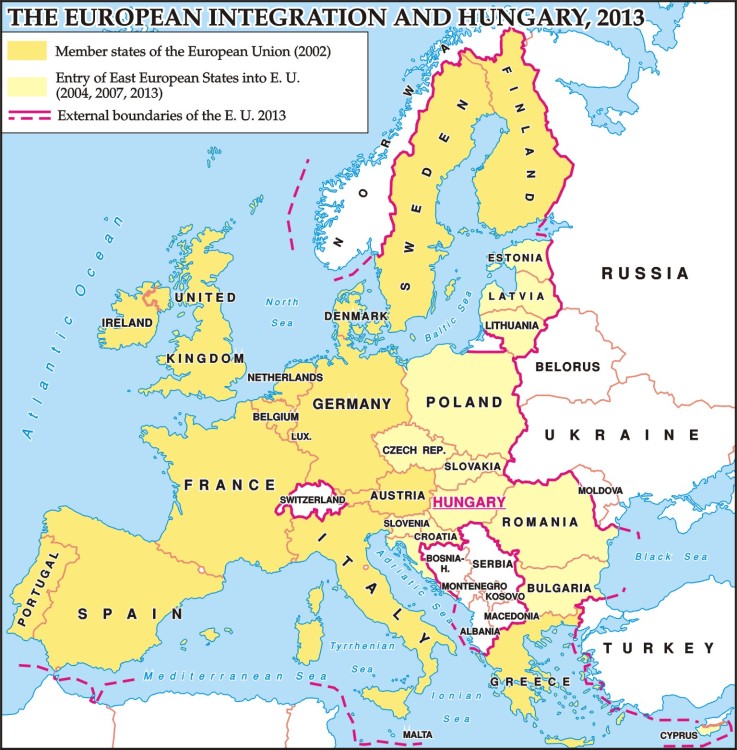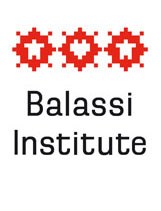The nation of Hungary lies in the Carpathian Basin in Central Europe, bordered by Slovakia to the north, the Ukraine to the north-east, Romania to the east and south-east, Serbia and Croatia to the south, Slovenia to the south-west, and Austria to the west. Its capital, and largest city, is Budapest. Hungary has been a member of the United Nations since 1955; NATO since 1999; the European Union since 2004; and the Schengen Agreement since 2007. It is also a founding member of the Visegrád Group. In terms of form of government, Hungary is a republic.

The territory of Hungary covers 93,036 km² of land, most of which lies at less than 200 m above sea level. Although Hungary has numerous medium-height mountain ranges, rises lying at heights greater than 300 m above sea level occupy less than 2% of the country. Hungary’s highest point is known as the Kékes at 1014 m above sea level, while its lowest point is located in Csongrád County at a height of just 75.8 m above sea level. Hungary is typically divided into six natural geographical regions: the west-eastern stretch of the Alps, known locally as Alpokalja, the Little Hungarian Plain, the Transdanubian Hills, the Transdanubian Mountains, the Great Hungarian Plain, and the Northern Mountains.

The average annual temperature in Hungary falls in the range of 8 to 11 °C, which is relatively high, with a fluctuation of 20-25 °C. Forming the axis of the country’s water system is the Danube, whose largest tributary is the Tisza. The largest lake both in Hungary, and in Central Europe, is Lake Balaton, which covers an area of 594 km². Succeeding Lake Balaton in size are Lake Tisza (Hungary’s largest artificial lake), Lake Fertő, which belongs to both Austria and Hungary, and Lake Velence. Hungary is the country in Europe that is richest in natural thermal springs. High in minerals and credited with medicinal properties, these waters in some places reach temperatures in excess of 70°C.
Hungary is also one of the richest countries in Europe from a zoological standpoint, boasting 10 national parks, 38 landscape protection areas, 142 national natural protection areas, one protected natural monument, and 1125 locally protected areas dedicated to preserving surviving native flora and fauna. Hungary’s protected natural assets include numerous parks, forests, mountains, lakes, rivers, wetland habitats, and caves.
Hungary’s most important natural resource is its farmland, with seventy percent of its territory suited to use in agriculture, and 72% of that consisting in plough land. For hundreds of years, Hungary has produced enough not only to feed itself, but also to support a growing export business. Since the Middle Ages, the country has sold significant quantities of its most important agricultural products – primarily beef, wheat, and wine – to the markets of Central and Western Europe. Because its land and climate are so amenable to agriculture, the fruits and vegetables grown in Hungary have an intrinsic composition that is virtually without peer. Since 1989, however, domestic agricultural production has been in decline.
During the Middle Ages and subsequent centuries, Hungary boasted a mining industry that was relatively advanced in comparison with Western countries. Currently, however, there are only a few working mines left in the country, as most major mining towns were lost under the Treaty of Trianon following World War I. Today, Hungary has few exploitable raw materials and fuel resources. Though some petroleum, natural gas, bauxite, coal, kaolin, zeolite, perlite, bentonite, and construction-grade andesite, rhyolite, tuff, and limestone are mined domestically, the country relies on imported raw materials to meet much of its needs.






